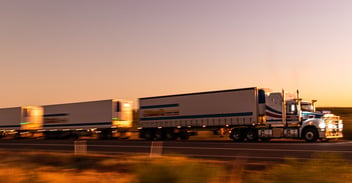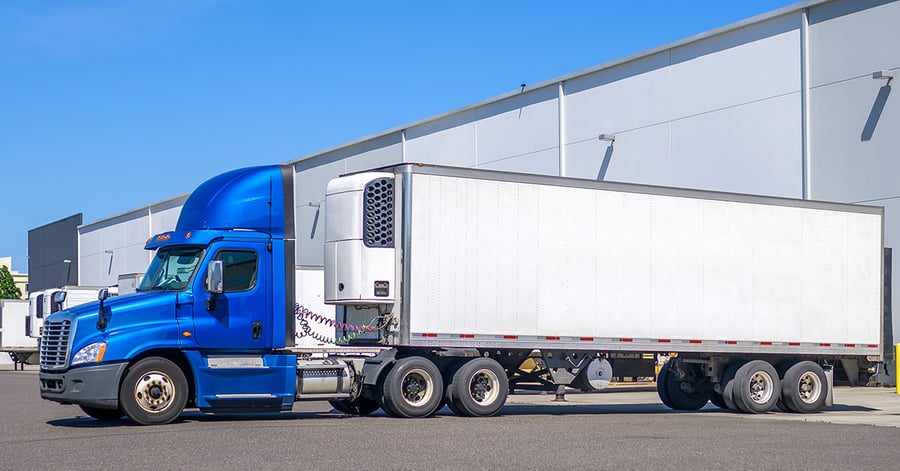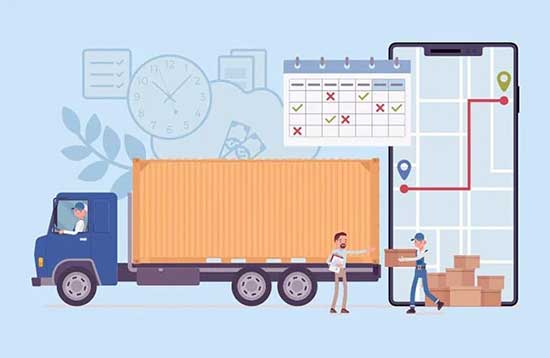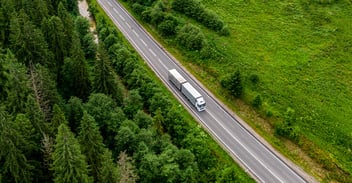

Imagine you ordered a new smartphone online, but the color wasn’t what you expected when it arrived. You initiate a return, and within 48 hours, a courier picks it up, your refund is processed, and the phone is inspected, repackaged, and resold—all without a hitch. Reverse logistics, a critical yet often underestimated component of the modern supply chain, powers this seamless experience. The globalretunemarket, valued at US$801.64 billion in 2024, is projected to grow at a 4.8% growth rate (CAGR) to reach US$1,166.81 billion by 2032, growth that's being fuelled by today's eCommerce-driven world where returns are inevitable.
According to a report by the National Retail Federation and Happy Returns, US consumers returned $890 billion in 2024, with eCommerce returns making up nearly 17% of all purchases. For third-party logistics (3PL) providers, managing these returns efficiently is no longer just about handling unwanted products—it’s about transforming a cost center into a strategic advantage.
The key question is: How can 3PLs turn reverse logistics challenges into revenue-generating opportunities?
Challenges Faced by 3PLs in Reverse Logistics
Before diving into solutions, it’s crucial to understand the hurdles 3PLs face in managing returns:
- High Operational Costs
Every returned item adds expenses—warehousing, labor for inspection, repackaging, and transportation. For some retailers, processing a return can cost between 20% and 65% of the product’s original price, significantly impacting profitability.
- Complexity in Processing
Returns vary widely—some products are like-new and resealable, others need repairs, and some are unsalvageable. This unpredictability creates inefficiencies in sorting, restocking, and disposal.
- Lack of Visibility & Tracking
Without real-time tracking systems, returned items can get lost or delayed, leading to customer frustration and financial losses. Poor integration between retailers and 3PLs exacerbates this issue.
- Rising Customer Expectations
Shoppers now demand fast, free, and frictionless returns. A complicated return process can drive customers to competitors, making speed and convenience non-negotiable.
- Regulatory & Sustainability Pressures
With increasing environmental awareness, businesses face pressure to reduce waste and adopt eco-friendly return practices. Regulations like Extended Producer Responsibility (EPR) laws are pushing companies to rethink how they handle returns.
Strategies for 3PLs to Optimize Reverse Logistics
1. Implementing Advanced Technology & Automation
Manual return processing is slow and costly. Automation speeds up operations while reducing errors.
- AI-Powered Sorting Systems:
Machine learning algorithms quickly assess returned items, categorizing them for resale, refurbishment, recycling, or liquidation. They can detect product condition (new, used, damaged), original packaging completeness, potential refurbishment needs, and appropriate disposition channels. This technology eliminates human error in categorization while processing items faster than manual methods. - Optimization of Reverse Logistics Workflows:
Efficient workflows are critical to minimizing delays and costs in reverse logistics. By leveraging AI and automation, 3PLs can streamline automated return authorization (RMA) processing, where AI-driven systems instantly validate return requests to reduce manual review time. Based on real-time demand and inventory data, smart routing and prioritization algorithms determine the optimal path for returned goods. Additionally, predictive analytics help warehouses adjust staffing levels dynamically during peak return periods, while seamless integration with forward logistics ensures that resellable items are quickly reintegrated into inventory, reducing holding costs. - Monitoring Performance and Continuous Optimization:
To maintain efficiency, 3PLs must track KPIs and refine processes continuously. Real-time analytics dashboards provide visibility into critical metrics like return processing time, recovery value, and customer satisfaction, helping identify bottlenecks. AI-powered root cause analysis examines return reasons and provides actionable insights to retailers. Feedback loops between 3PLs and retailers allow for data-driven improvements in product quality, packaging, and marketing accuracy. Machine learning further enhances operations by iteratively refining sorting rules, warehouse layouts, and transportation routes for maximum efficiency. - Automated Warehousing:
Modern facilities now deploy robotic arms for precise product inspection, repackaging, and restocking, smart packaging stations to select the right box size, automated conveyor systems with integrated scanning, and autonomous mobile robots for inventory movement. Warehouse robots slash labor costs 40% while boosting speed and accuracy for logistics leaders. - Blockchain for Transparency:
It solves one of the most persistent pain points in reverse logistics by ensuring end-to-end tracking of returns, reducing lost items, and improving accountability. By creating an immutable digital ledger for each return, all stakeholders gain real-time visibility into item location, tamper-proof condition documentation, automated smart contracts for refund processing, and historical data for dispute resolution.
2. Enhancing Data Analytics for Better Decision-Making
Sophisticated data analytics turn return operations from reactive to proactive. The most impactful applications include:
- Predictive Return Analytics go far beyond simple reporting. Advanced models analyzes:
- Product-specific return patterns
- Seasonal fluctuations
- Geographic return hotspots
- Correlation between marketing claims and returns
These insights allow retailers to adjust product descriptions, improve quality control, and optimize inventory allocation.
- Customer Segmentation
Identifies behavioral patterns that impact profitability. It helps flag frequent returners, allowing businesses to modify policies (e.g., restocking fees for excessive returns).
- Dynamic Return Routing:
Consolidates returns to minimize transportation expenses. Smart algorithms consider:- Current transportation capacity
- Facility processing capabilities
- Product value and condition
- Final disposition destinations
3. Developing Sustainable & Cost-Effective Return Processes
Sustainability in reverse logistics has evolved from compliance to competitive advantage. Consumers and regulators demand eco-friendly returns, and sustainable practices can also cut costs.
- Refurbishment & Resale:
Restores returned goods to like-new condition, creating a secondary revenue stream. The system creates value from returns through certified refurbishment processes, quality assurance protocols, dedicated sales channels, and extended warranty offerings. With a 10.2% CAGR, the refurbished electronics market is likely to surge from US$6161.81 billion in 2025 to US$121.99 billion in 2032, reflecting increasing consumer demand for sustainable shopping alternatives. - Bulk Liquidation:
Sells unsellable returns in bulk to discount retailers or liquidation platforms. It has become increasingly sophisticated with AI-powered lot composition optimization, dynamic pricing models, targeted buyer networks, and digital auction platforms.
- Recycling Partnerships:
Collaborates with eWaste and textile recyclers to divert waste from landfills and create circular solutions like material recovery programs, upcycling initiatives, take-back schemes, and closed-loop manufacturing.
4. Strengthening Partnerships with Retailers & eCommerce Businesses
A seamless retailer-3PL collaboration ensures faster, cheaper, and more efficient returns. Collaborative approaches are redefining return efficiency through:
- Integrated Return Portals:
Simplifies the process for customers by providing unified tracking across carriers, automated return authorization, intelligent return reason coding, and seamless refund processing. 35% of organizations are using AI to improve customer service agent efficiency in 2024. - Dedicated Return Hubs:
Reduces transit times by processing returns at localized centers. They specialize in regional processing centers, cross-retailer consolidation, value recovery services, and quality assurance. - Customized Service-Level Agreements (SLAs):
Ensures priority handling for high-value or time-sensitive returns. SLAs now include innovative provisions like performance-based pricing, value recovery incentives, sustainability benchmarks, and technology integration requirements. These agreements align 3PL and retailer objectives for mutual benefit.
5. Improving Customer Experience in Returns
A hassle-free return process boosts loyalty and repeat purchases. The return experience has become a key brand differentiator through:
- Instant Refund Systems:
Issues refunds before the item is received, building trust. The systems function by leveraging predictive analytics, incorporating trust scoring, using automated approval workflows, and integrating with payment platforms. - Convenient Drop-Off Networks:
Partners with retail stores for easy returns. These networks feature retail partner locations, secure locker systems, mobile pickup services, and carrier-integrated options. - Incentivized Exchange Programs:
Offers discounts on future purchases to retain customers. These programs personalize offers based on purchase history, calculate optimal discount levels, automate recommendation engines, and track program effectiveness.
Management Software for Scalable Reverse Logistics
Efficient reverse logistics demands more than manual coordination, it requires a centralized, intelligent logistics system capable of managing complex return workflows at scale. This is where logistics management software and modern Logistics ERP platforms become indispensable tools for third-party logistics (3PL) providers looking to optimize operations, minimize costs, and create a unified data ecosystem across return stages.
Unified Data & Process Integration
A robust logistics management software consolidates all return-related activities, from customer return initiation to final disposition, within a single interface. This centralized platform enhances communication between 3PLs and retailers, eliminates data silos, and ensures that return inventory is tracked and processed in real-time. Integrated modules support return merchandise authorization (RMA), warehouse inventory management, condition grading, and automated billing reconciliation, streamlining reverse logistics workflows from end to end.
Scalability Through Logistics ERP
Modern Logistics ERP systems are designed to scale with the business. As return volumes increase, especially during seasonal peaks or product recalls, ERP solutions provide dynamic resource allocation, automated decision-making, and workflow reconfiguration based on historical data and predictive analytics. They enable real-time visibility into return rates, processing time, product reusability, and cost-to-serve metrics, empowering logistics managers to make proactive decisions that improve turnaround and reduce operational overhead.
Custom Workflows & AI-Driven Insights
Advanced logistics system platforms come equipped with AI and machine learning features that can predict return trends, recommend optimal routing, and dynamically adjust warehouse layout for better return handling. These systems also offer customizable dashboards and exception handling rules to improve flexibility and agility. Furthermore, analytics engines within logistics management software continuously monitor KPIs and suggest iterative improvements to return processes, contributing to long-term strategic gains.
By embedding logistics management software, a responsive logistics system, and scalable Logistics ERP solutions into their core infrastructure, 3PLs can future-proof their reverse logistics strategies and build an intelligent return ecosystem that enhances speed, transparency, and profitability.
Conclusion: Turning Reverse Logistics into a Competitive Advantage
Reverse logistics is no longer just a necessary evil—it’s a strategic opportunity. By embracing automation, data analytics, sustainability, and customer-centric solutions, 3PLs can:
- Reduce costs through efficiency gains.
- Recover lost revenue via refurbishment and liquidation.
- Enhance brand loyalty with seamless returns.
- Meet regulatory demands through eco-friendly practices.
The future of logistics belongs to those who re-imagine returns as a profit driver, not a burden. For 3PLs ready to innovate, the potential is limitless. Are you prepared to turn reverse logistics into your next big opportunity? Learn more here.
Frequently Asked Questions (FAQs)
Enterprise asset management (EAM) involves the management of mission critical assets of an organization throughout each asset's lifecycle. EAM is used to plan, optimize, execute, and track the needed maintenance activities with the associated priorities, skills, materials, tools, and information. The aim is to optimize the quality and utilization of assets throughout their lifecycle, increase productive uptime and reduce operational costs.
Enterprise asset management (EAM) involves the management of the maintenance of physical assets of an organization throughout each asset's lifecycle. EAM is used to plan, optimize, execute, and track the needed maintenance activities with the associated priorities, skills, materials, tools, and information.
The software helps in effective maintenance of assets through preventive, predictive, shutdown and breakdown maintenance strategies. The system also helps enterprises mitigate equipment risks by enhanced safety standards. The streamlined operations and improved asset performance helps organizations increase their investment effectiveness.
EAM is important because it helps organizations track, assess, manage and optimize asset quality and reliability. Asset intensive Organizations have hundreds, thousands, even millions of assets which needs to be maintained to maximize / optimize life of these assets to increase the return on investment.
The key features of effective EAM are:
- Work management.
- Maintenance Strategies (Preventive/ Predictive / Breakdown / Shutdown).
- Planning and scheduling.
- Supply chain management.
- Health and safety.
- Mobility.
- Analytics.
- Improved Asset Health at reduced cost through data driven maintenance Programs
- Complete visibilityon entire maintenance data across Equipment, across Models, across Branches to aid in analysis & decision making such as to Repair or Replace the Equipment
- Insightful analysis of Inspection Data to improve customer satisfaction
- Effective maintenance management enhanced by predictive maintenance and inbuilt analytics
- Increased reliability and safety, keeps complete track of all the inspections & calibration schedules
- Mobile Application enables users to execute work while “in the field” leading to minimized non-productive time and increased productivity and reduces duplication of work and human errors in recording information.
- Quick turnaround time through Actionable Notification & Alerts for every process in real time and accessible anytime and anywhere.
- Improved Regulatory Part of asset management involves the implementation of better O&M practices, which can significantly improve compliance.
Asset Intensive companies under the following Industries :
- Ports
- Cement and Mining
- Utilities
- Fleet Maintenance
- Equipment Rental
- Other Manufacturing
- Real Estate & Infrastructure
- Power Generation
Contact us for a meeting and schedule a demo
This differs on case to case basis, based on the type of installation and unique industry specific requirements. Contact us for a meeting and schedule a demo.
This differs on case to case basis, based on the type of installation and unique industry specific requirements. Contact us for a meeting and schedule a demo.
Stay Connected, follow us on LinkedIn / Twitter to know more about EAM Software latest trends.


